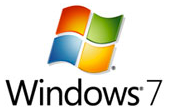Next version of Windows 7 will be Release Candidate
Microsoft has said there won't be another beta of its next operating system, Windows 7.

The next version of Windows 7 that Microsoft releases to the world will be the release candidate not just another beta.
The Windows 7 Beta was first released last month, with the download period extended to next week.
Steven Sinofsky, head of the Windows development team, said in a blog post that he was looking to assuage concerns that users would have to revert back to their "old" operating system when the beta expires in August. Stressing that he was not announcing a ship date or indeed, any change of plans Sinofsky said that the next version will indeed be the release candidate (RC).
Once the RC is out, Microsoft will give Windows 7 to manufacturers so they can start installing it on new devices, after which it will become generally available to the rest of us. Sinofsky added that the RC will continue to function "long enough so no one should worry."
"The obvious question is that we know the Pre-Beta was October 28, 2008, and the Beta was January 7th, so when is the Release Candidate and RTM? The answer is forthcoming."
But he warned that this time around, the development and release path was different than usual for Microsoft. "As we have said before, with Windows 7 we chose a slightly different approach which we were clear up front about and are all now experiencing together and out in the open."
He explained that the beta had both an API and complete set of features, and that hardware and software makers will continue to receive interim builds in order to keep up with any changes and be ready for the full release.
Get the ITPro. daily newsletter
Receive our latest news, industry updates, featured resources and more. Sign up today to receive our FREE report on AI cyber crime & security - newly updated for 2024.
"The last stages of a Windows release are a partnership across the entire ecosystem working to make sure that the incredible variety of choices you have for PCs, software, and peripherals work together to bring you a complete and satisfying Windows 7 experience," he wrote.
When Vista was released, one of the major complaints was that third-party developers and hardware manufacturers had been unable to create versions of their software or drivers for their kit for the OS. This could be a move on Microsoft's part to address that previous mistake.
"One thing you might be seeing is that hardware and software vendors might be trying out updated drivers/software enhanced for Windows 7. For example, many of the anti-virus vendors already have released compatibility packs or updates that are automatically applied to your running installation," he said, adding that any drivers for Vista all work on 7, and GPU chipsets and other drivers already work on the new system.
Sinofsky said the next step is to continue testing the beta just like the rest of us are doing. "As a development team we're doing just what many of you do, which is choosing to run the Beta full time on many PCs at home and work (personally I have at least nine different machines running it full time) and we're running it on many thousands of individual's machines inside Microsoft, and thousands of machines in our labs as well," he said, adding that the rate of feedback peaked at one message every 15 seconds.
The goal with all this testing, he said, was to improve the user experience. "A very significant portion of our effort from Beta to RC is focused on exclusively on quality and performance. We want to fix bugs experienced by customers in real usage as well as our broad base of test suites and automation. A key part of this work is to fix the bugs that people really encounter and we do so by focusing our efforts on the data we receive to drive the ordering and priority of which bugs to fix."
He noted that some complaints the team has received involve keyboard settings and defaults, but that there would likely be very few changes to the code. "We often joke' that this is the point of lowest productivity for the development team because we all come to work focused on the product but we write almost no code," Sinofsky noted.
Is any good? Click here to read our review of the Windows 7 Beta.




